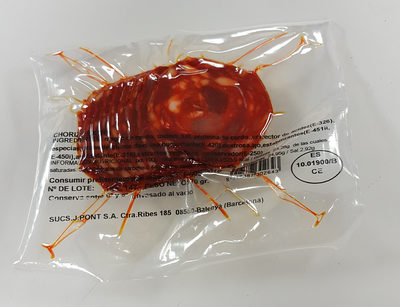Chorizo Extra - - 70g
Aquesta pàgina del producte no està completa. Podeu ajudar a completar-la editant-la i afegint-hi més dades a partir de les fotos ja disponibles, o fent-ne més amb l'aplicació de androide o iPhone / iPad. Gràcies!
×
Codi de barres: 8413387302643 (EAN / EAN-13)
Quantitat: 70g
Empaquetament: Plàstic
Categories: Productes amb base de carn, Carns, Carns preparades
Codi de traçabilitat: ES 10.01900/B CE
Països on es va vendre: Espanya
Matching with your preferences
Entorn
Empaquetament
Transport
Report a problem
Fonts de dades
Producte afegit per osimo
Última modificació de la pàgina del producte per roboto-app.
La pàgina del producte, també editada per acuario, openfoodfacts-contributors, packbot, thaialagata.
Si les dades són incorrectes o incompletes, pot completar o corregir editant aquesta pàgina.










